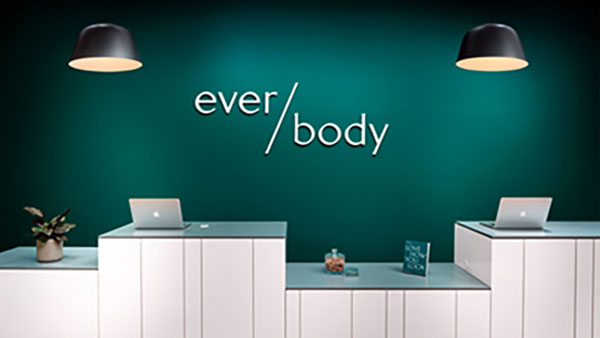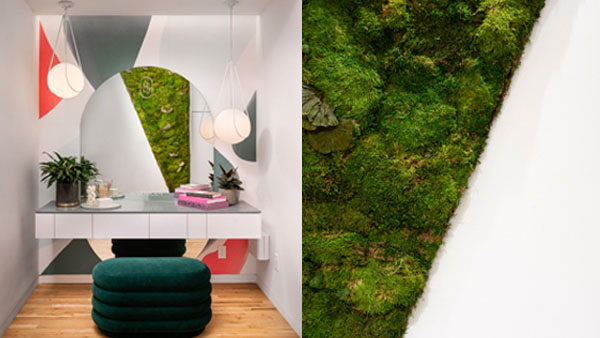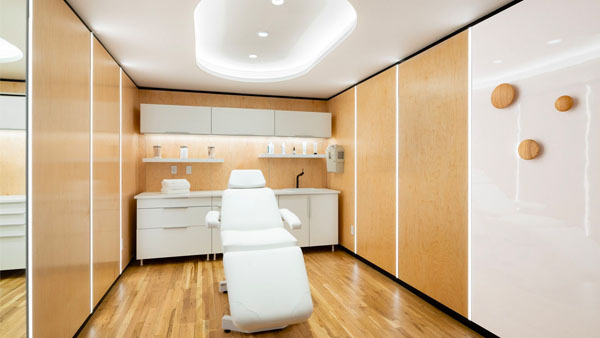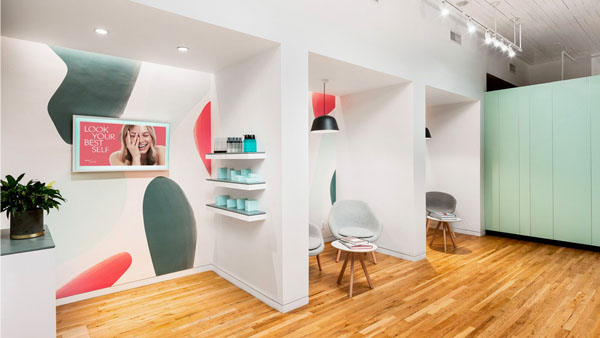Employing a holistic design approach cognizant of the relationship between brand and architecture, Cactus, the cross-sectoral design studio, has reimagined the future of “clinical” space in the design of Ever/Body. The revolutionary new model in cosmetic dermatology opened their first location in the SoHo neighborhood of Manhattan. Backed by $17 million in funding, Ever/Body is demystifying cosmetic dermatology through transparent, modern care rooted in high-quality medical operations and an elevated patient experience.
The signature flagship design serves as a reproducible model to support the brand’s plan for national expansion. Cactus’ clever design features a calming, modular zen pod concept for treatment rooms and an aesthetic that addresses the democratization of high-end skincare.

“For Ever/Body, so much of the company and brand is based in their physical locations,” explains Cactus Head of Strategy, Noah Waxman. “We decided at the outset to focus on merging classic, natural elements with a distinct sense of futurism. Both the brand and the architecture rely on calming greens, plant life and natural wood tones in concert with glossy whites, inlaid metal and pops of bright light.”

Cactus started with architectural concepts for the Ever/Body clinics with a design that injects modernity into a relaxing haven of prana—soothing like a spa or traditional Japanese onsen. Biophilic elements and chic, playful color palettes reinforce the welcoming, trustworthy environment that Ever/Body sought to build. The architectural concepts naturally formed the inspiration for the brand strategy, naming, and graphical language of Ever/Body, which strikes an inspirational, forward-looking tone.

Key to Ever/Body’s innovation is its embrace of the concept of modular architecture. The treatment rooms are spacious and cloaked in warm wood, but there is more than meets the eye—every room is comprised of an individual “pod” that can be dropped into any new location. Pods were meticulously envisioned to combine style and functionality, including their smart integration of sprinkler and HVAC systems. The units are sized so that the appropriate number of treatment rooms can be easily selected based on square footage, and then constructed offsite and installed. Laying the foundation for subsequent floor plans, pod door locations are strategically placed at a 45-degree angle to create visual interest from the hall and provide a better flow. Each treatment room is perfectly designed to enhance patient experience while also allowing for reduced construction costs and ultra-fast assembly for follow-on locations—a vital ingredient in the company’s plans for rapid expansion.

“We took a radical, iterative approach to the architectural design for Ever/Body,” adds Marcelo Pontes, Cactus’ Head of Architecture. “We wanted to dramatically reduce the time it takes to open a retail location while also creating a very special, private type of space for the treatment rooms.”

Because of the design, the space was completed in just under eight weeks, from gaining access to the space to opening for business. However, the Cactus team took care not to sacrifice the aesthetics, paying special attention to details like the oversized doors, which were intentionally crafted with wood and steel to instill a sense of luxury, security, and privacy. Lighting was also a critical component in the design, particularly in the multi-functional treatment rooms which are used for a range of procedures and consultations. Each room provides adjustable lighting to accommodate this adaptable requirement with multiple light sources ranging from direct to diffused. The result is a personalized, accurate, and effective experience for both the caregiver and patient.

Before and after treatments, patients are welcomed by an oversized reception area. The inviting space neatly conceals impersonal tech elements, like monitors and phones, instead focusing on displaying procedure examples, products, and educational information. The final result is a forward-thinking environment that aims to dissolve stigmas and misinformation, pushing cosmetic dermatology practices into the popular zeitgeist.

“Ever/Body is a leading example of what can happen when brand and architecture are created together in parallel,” notes Cactus Head of Technology and Production, Lucas Werthein, “Rather than the traditional sequence in which brand is created, and then architecture is an afterthought reacting to the brand. In this case, the architecture evolved first, and the Ever/Body brand ethos and voice really were inspired by the architectural palette and designs.”